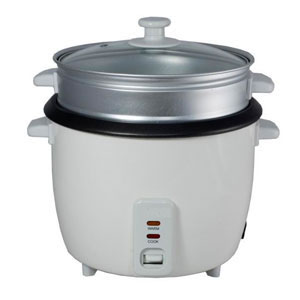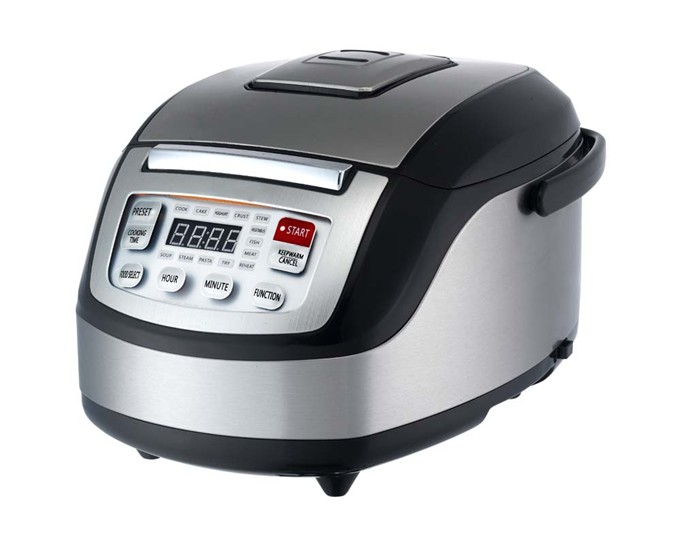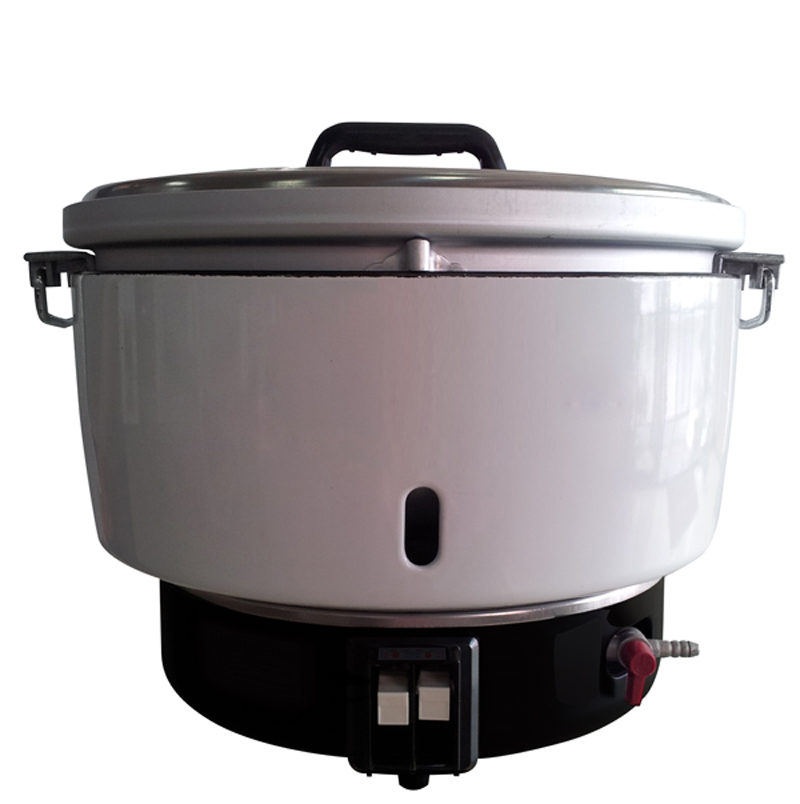sales@newstarmotor.com
MSN:vivia2013newstar@hotmail.com
Skype:vivialau201314
Tel:0755-22189196 &008618923763617
Cooking rice with an electric rice cooker
The rice is measured and added to the inner bowl or washed in a separate bowl (it is not recommended to wash rice in the inner bowl itself) in order to remove loosened starch and residual bran. Strainers are often used in the washing and draining process. For better texture and taste, some types of rice, e.g., Japanese rice or Calrose rice which is suited for absorption method, require pre-cooking water absorption. The water absorption step typically involves letting the rice stand for at least 5 min after draining water from the washing step and soaking the rice in the measured water for at least 15 min (or some claim it to be 1 hour) before cooking. The water draining step is believed[by whom?] to make the water measurement more accurate, if the water is measured and added after the initial water absorption that takes place in the washing step. Some people prefer to achieve the water absorption by simply leaving the rice soaking in the rice cooker overnight before starting cooking in the morning. Some other types of rice, e.g., long-grain rice or scented rice such as jasmine rice, do not require washing or the water absorption step. The water for cooking is added to the inner bowl by using measuring cups or simply filling up to the appropriate graduated mark in the inner bowl. Although cold water is normally added, boiling water is used for cooking sushi rice.
Different kinds of rice require different amounts of water. Usually, there are graduated marks for the right amount of water only for white rice, but sometimes there are separate scales for brown rice (as more water is required) or for cooking other food in the appliance.
Once the lid is closed and the cooking cycle has been activated, the rice cooker does the rest. Most models give a countdown in minutes to the "ready time," or beep when done. After cooking cycle is completed, it is recommended that the rice is to "rest" for 5 minute for post-absorption and then to be stirred to prevent the grains from clinging to each other too hard. Some rice, e.g., long-grain or scented rice, do not seem to require this post-absorption step.
Some higher-end models automatically time the soaking (pre-cooking water absorption) and the resting periods, therefore, there is no need to manually manage the water absorption or time these steps.
Following is our NS-ER01 drum rice cooker with steamer

Microwave rice cookers
A microwave rice cooker is a microwavable container designed specifically for cooking rice. Some container consists of three parts: an outer bowl, a fitted lid with steam vents, and an inner bowl with a finely perforated base. Some others have only one container and the double-layered lid fitted with a steam vent.
A measured amount of dry rice is placed within the bowl. For long-grain rice or scented rice (e.g., basmati rice, Thai jasmine rice), neither washing or soaking is usually necessary unless contaminating dirt is suspected. For Japanese rice (e.g., Calrose or medium/short grain rice), the rice is washed to remove surface starch powder and the trace of rice bran from the grains. For washing, a generous amount of water is added to the rice then the mixture is stirred a few times with a hand quickly. The water is then drained immediately while the lighter starch is still in the water, and the heavier rice grains settle at the bottom of the container. The washing process may need to be repeated up to three times until the water draining out is clear of starch. Excessive washing, however, is believed[by whom?] to be detrimental, since it will remove too many water-soluble nutrients, e.g., vitamins.
With the three-part model, the inner bowl is then placed within the outer bowl and a small amount of water is added, so that the rice is just about covered. The lid is then fitted and the cooker is microwaved at full power for between 8 and 15 minutes (depending on the rice type, power output of the appliance and personal texture preference). Cooking occurs with the water boiling away and steaming the grains. It is very important to follow the manufacturer's instructions regarding the length of time and amount of water added, otherwise the rice can burn. This method works well with long-grain rice that does not release much starch and is conventionally cooked with the boil/strain or steam methods.
Microwave rice cookers can also be used for cooking Japanese rice, or medium- or short grain rice, but the absorption method should be used. The rice is washed well to remove starch and allowed to stand to absorb water for at least 15 min before cooking. The water absorption step is essential, otherwise the cooking may result in cooked rice which is still too hard. The regular amount of water as the conventional cooking method can be used. The container is placed in the microwave and it is brought up to the boil at high power. Then, it can be cooked at low or low-medium power until all the water is evaporated (about 20 min - 30 min, depending on the rice type) and not much steam is coming out. The container is then left to stand for 5 min before the rice is stirred for serving.
Following is our NS-MC02 multifunction rice cooker

Gas rice cookers
Gas rice cookers have a significantly larger capacity than home rice cookers (5 to 10 liters) and are more commonly used for commercial purposes. They must be connected directly to a fuel source (either a natural gas line or a portable propane source) and do not require an electrical power supply.
When cooking in a commercial setting, where quality, quantity, and speed are important factors, gas powered rice cookers offer several benefits. The gas powered flame source heats the cooking pot much more quickly than electrical power sources. Cooking at higher temperatures allows the rice to absorb water faster and cook more quickly, yielding a sweeter and more firm final product. Due to the amount of rice being cooked at one time, electrical powered cookers are not able to heat the cooking pot fast enough. This usually results in uneven cooking of the overall batch of rice-often leading to mushy or burnt rice on the bottom of the pot and sometimes under-cooked rice at the middle and top of the cooking pot. Finally, being able to heat the cooking pot to a higher temperature relatively quickly allows the rice to cook faster and steam properly, resulting in a better quality batch of rice.
Most, if not all, gas rice cookers use an heat based automatic shut-off system. The basic principle of these systems is such that gas flow into the burner is halted once a specific temperature is reached, resulting in the burner flame to go out.
A relatively new concept is the commercial gas pressure cooker. These cookers use pressure cooking to produce a uniformly cooked batch of rice. Cooking rice in a pressure cooker allows the rice to cook under more optimal conditions.
Ideal cooking for rice employs a method of a fast heating source along with a uniform delivery of that heat. A gas powered pressure cooking system is able to use a flame heat source to heat the cooking vessel quickly and the pressure cooker is able to heat the internal cooking environment to higher than the boiling point of water in a uniform manner


